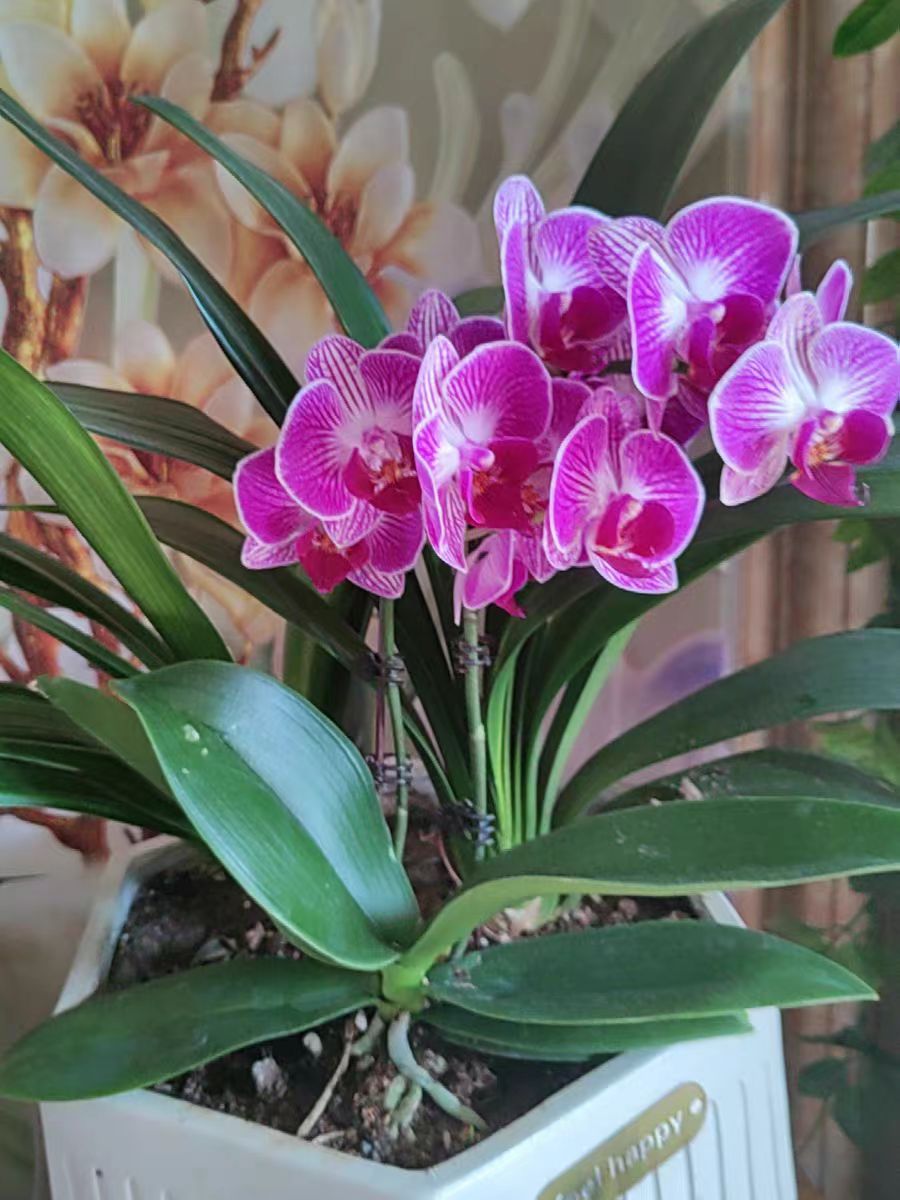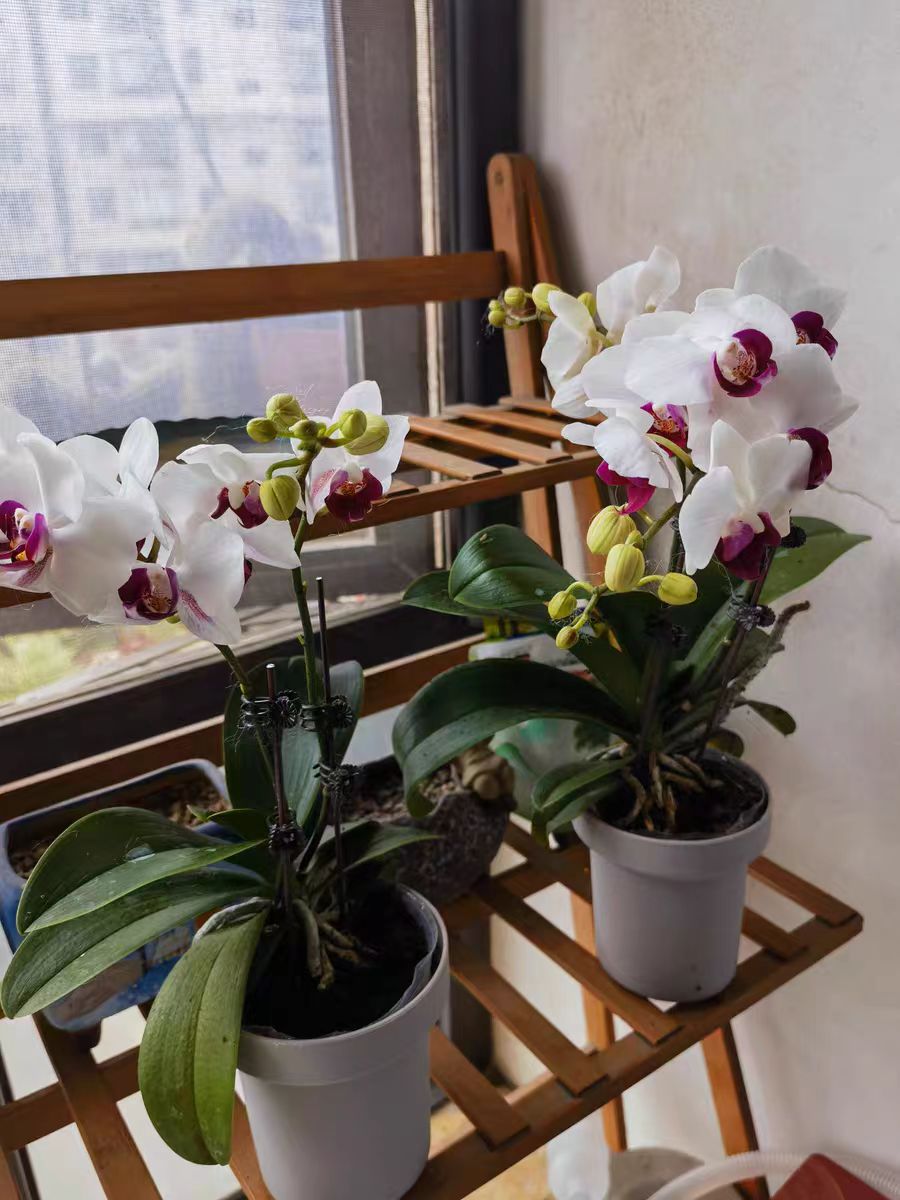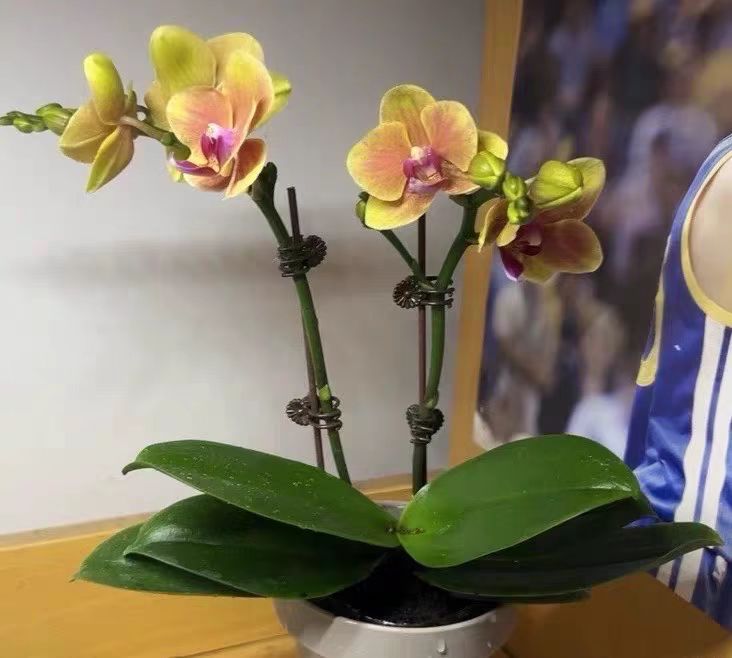Friends who have cultivated Phalaenopsis orchids at home all know that although Phalaenopsis orchids are beautiful, there are some small details to pay attention to when it comes to their cultivation. Today, let's talk about a particularly important aspect of Phalaenopsis orchid maintenance - humidity.
Phalaenopsis orchids are native to tropical and subtropical regions, where it is hot and humid. Having been in such an environment for a long time, Phalaenopsis orchids have developed unique growth habits. They have aerial roots that can absorb water and nutrients from the air. If the air is too dry and the humidity is insufficient, the aerial roots won't be able to absorb enough water, and gradually, they will not grow well. If the roots are not in good condition, the entire Phalaenopsis orchid will surely look lackluster, and its leaves will become wrinkled and lose their luster.
With appropriate humidity, the leaves of Phalaenopsis orchids can always stay upright, and photosynthesis and respiration can proceed smoothly. Only in this way can it accumulate enough energy to prepare for future blooming. If the humidity fails to meet the standard, the Phalaenopsis orchid may not even be able to bloom. Even if it does, the flowers will be small and not vivid in color. Generally speaking, when cultivating Phalaenopsis orchids at home, maintaining the humidity between 60% and 80% is the most suitable. If it is lower than 50%, you need to find ways to increase the humidity. For example, in winter in northern China, when the heating is on at home, the air is extremely dry, and the humidity is often only around 30%, which is very uncomfortable for Phalaenopsis orchids. Sometimes in southern China, although the humidity outside is high, the indoor environment may not necessarily meet the requirements of Phalaenopsis orchids.
So, how can we increase the humidity for Phalaenopsis orchids at home? There are many methods. The simplest one is to use a humidifier. Ultrasonic humidifiers are quite common on the market nowadays. After bringing it home, adjust the fog output and working time according to the size of the room and the location where the Phalaenopsis orchid is placed. However, it should be noted that don't directly blow the humidifier towards the Phalaenopsis orchid. Keep it a little farther away, otherwise, there will always be water droplets on the leaves, and the plant is likely to get sick.
There is also a traditional method. Find a tray, lay a layer of stones in it, add water to half the height of the stones, and then place the flower pot of the Phalaenopsis orchid on the stones. As the water slowly evaporates, it can increase the humidity of the surrounding air. Although this method is simple, remember to change the water regularly, otherwise, it is easy to breed mosquitoes and bacteria. In addition, you can also use a spray bottle to spray water into the air around the Phalaenopsis orchid, about 2 to 3 times a day. However, be careful when it is in bloom. Don't spray directly on the flowers, otherwise, the blooming period will be shortened.
Humidity management is a crucial part of cultivating Phalaenopsis orchids. By understanding its humidity requirements and using these little tips for increasing humidity, I believe that everyone's Phalaenopsis orchids will surely grow lush and bloom beautifully every year.
How to increase the humidity for Phalaenopsis orchids grown at home?

Share with
Tagged in :




Leave a Reply